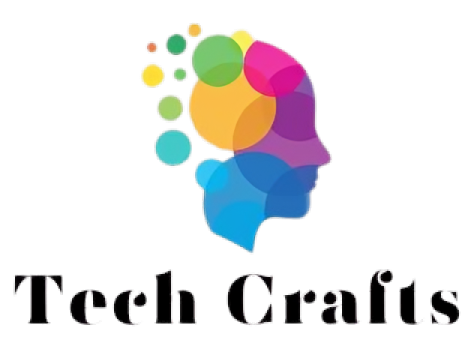In the ever-evolving world of technology, trends come and go—but every once in a while, something comes along that truly disrupts the status quo. Enter Wepbound. A name that, until recently, was relatively unknown, has quickly become the talk of the tech industry. But what exactly is Wepbound, and why is everyone in tech suddenly paying attention?
What Is Wepbound?
At its core, Wepbound is a revolutionary framework designed to bridge the gap between web applications and bound systems—environments where software is tightly integrated with hardware or specific networks. Think of it as a hybrid that combines the flexibility of modern web development with the performance and control of native platforms.
Wepbound isn’t just another JavaScript library or cloud tool. It’s an entire ecosystem that allows developers to build ultra-responsive, high-performance applications that work seamlessly across multiple platforms, whether cloud-based, edge-based, or fully offline.
Why Is It Gaining So Much Attention?
1. Next-Level Performance
One of Wepbound’s strongest selling points is its speed. Traditional web applications often suffer from latency and rely heavily on internet connectivity. Wepbound uses edge computing principles and smart caching to deliver near-native performance, even in low-connectivity scenarios.
2. Offline-First Architecture
In a world where users are increasingly mobile and not always connected, Wepbound’s offline-first approach is a game changer. Apps built with Wepbound can operate fully offline, syncing data in real-time once a connection is restored—similar to how Google Docs handles offline edits.
3. Unified Development Environment
Wepbound simplifies the developer experience by offering a single codebase for web, mobile, and embedded systems. This unification reduces development time, lowers maintenance costs, and ensures consistent user experiences across platforms.
4. Built for the Edge
As edge computing becomes more mainstream, Wepbound’s design makes it ideal for deployment on IoT devices, smart appliances, and even wearable tech. It’s lightweight, secure, and optimized for low-power environments, making it a top pick for future-forward developers.
5. Strong Backing and Open-Source Community
Wepbound is backed by a growing community of developers and contributors, many of whom are veterans from projects like React, Node.js, and Flutter. Its open-source model has encouraged rapid innovation and adoption across startups and enterprises alike.
Real-World Use Cases
From healthcare startups building offline-capable diagnostic apps in remote regions, to logistics firms deploying intelligent tracking systems in areas with spotty connectivity, Wepbound is already making an impact. Tech giants are reportedly experimenting with Wepbound to streamline operations across distributed teams and infrastructure.
What’s Next for Wepbound?
While still in its early stages, Wepbound has the markings of a long-term player. With upcoming features like AI-native integration, blockchain support, and advanced DevOps tooling, the platform is poised to reshape how we think about application development.
Final Thoughts
Whether it’s the performance, the scalability, or the sheer flexibility, Wepbound is more than just a buzzword—it’s a glimpse into the future of development. As more companies and developers explore its capabilities, one thing is clear: Wepbound is not just another trend. It’s a paradigm shift.
FAQs About Wepbound
1. What is Wepbound?
Wepbound is a cutting-edge development framework that combines the power of web technologies with the performance of bound systems (such as native or embedded platforms). It allows developers to build cross-platform applications that run efficiently both online and offline.
2. Is Wepbound open-source?
Yes, Wepbound is fully open-source, with a growing community of developers contributing to its ecosystem. This encourages transparency, flexibility, and rapid innovation.
3. What platforms does Wepbound support?
Wepbound supports:
- Web (browsers)
- Mobile (iOS and Android)
- Desktop (Windows, macOS, Linux)
- Edge and IoT devices (Raspberry Pi, Arduino, and others)
4. How is Wepbound different from frameworks like React or Flutter?
Unlike React (web-focused) or Flutter (mobile-focused), Wepbound provides a unified platform to develop applications for web, mobile, desktop, and embedded systems using a single codebase, with built-in offline support and edge optimization.
Also Read: Exploring Speedyshort.com: A Comprehensive Look at the URL Shortening Platform
5. Can I use Wepbound for enterprise-level applications?
Absolutely. Wepbound is designed for scalability and performance, making it suitable for both startups and large-scale enterprise applications, including logistics, healthcare, finance, and industrial systems.
6. Does Wepbound support offline functionality?
Yes, one of Wepbound’s core features is its offline-first architecture. Apps built with Wepbound can work seamlessly without internet access, automatically syncing data when reconnected.
7. What programming languages does Wepbound use?
Wepbound primarily uses TypeScript and Rust under the hood, but it provides APIs and tools that are developer-friendly, especially for those familiar with JavaScript and modern web development.
8. Is there a learning curve for Wepbound?
Wepbound is designed to be developer-friendly. If you’re already familiar with React, Angular, or Vue, you’ll find the learning curve manageable. The documentation and community support are also growing quickly.
9. Who is behind Wepbound?
Wepbound was initiated by a coalition of open-source contributors and former developers from major tech platforms. It is now maintained by an international community of engineers and supported by several forward-thinking tech companies.
10. How can I get started with Wepbound?
You can visit the official Wepbound website or GitHub repository to:
- Access documentation
- Try starter templates
- Join the developer community
- Watch tutorials and demos





